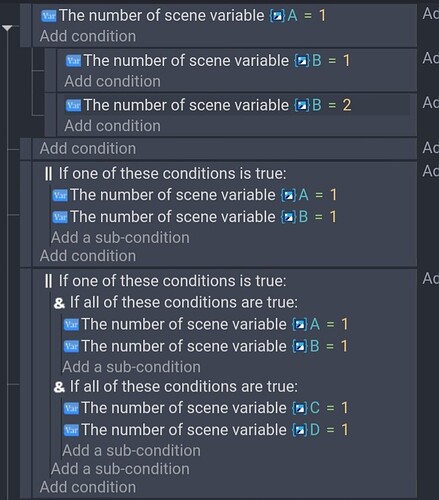You can use add or and not conditions separately or mixed . You can also put multiple subevents on the same level as each other.
For an if then else You can use opposite comparison or invert the condition.
If A<7 then do something
If A>=7 then do something
You can also use another variable. I like to use a boolean. Set it to false first.
This is like an else or a select case
Set Changed=false
If a =1 then set changed =true and do stuff
If a =2 then set changed =true and do stuff
If a =3 then set changed =true and do stuff
If changed =false then do something
Edit: this was a poor example it doesn’t need to be the same variable or condition type. This was an attempt at an easy to understand example. In this case the last event could’ve been if one of these a< 1 or a>3. The other events could’ve been unrelated like a collision, a mouse event or whatever. In some cases it’s easier to invert conditions. Other times it’s better to use a variable instead of repeating a more resource hungry event. It’s quicker to check a bollean than repeat a formula or check for collisions between a lot of instances.
There are a lot of different ways to arrange conditions, events and subevents.
